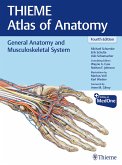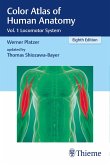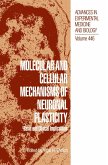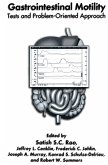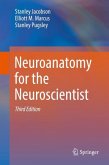The craniofacial musculature, including the extraocular muscles, muscles associated with the
auditory system, the masseter, the tongue, and the laryngeal and pharyngeal muscles, all
participate in functions that are critical to life: vision, intact of nutrition, breathing, and hearing.
Despite their critical importance, the majority of research on skeletal muscle basically has
ignored this collection of muscles. This is most likely due to their complexity in form,
development, fiber types, physiology, and disease profiles. All these make these muscles
extremely difficult to study.
Vision depends on voluntary and reflexive eye movements initiated by the oculomotor system.
The effector arm of this motor system includes the extraocular muscles and their motor neurons.
Mastication, and therefore food intake, depends on the complex movements of the masseter and
tongue musculature. The effector arm of this motor system includes the masseter and tongue
muscles and their motor neurons. Respiration, human phonation, as well as gestation, depend on
the laryngeal and pharyngeal musculature. The effector arm of these motor systems includes the
intrinsic and extrinsic laryngeal muscles and the pharyngeal muscles and their motor neurons.
Recently there has been a renewed interest in understanding the basic cell biology and
pathologies associated with these unusual skeletal muscles. This book will highlight novel
findings on the development of these muscles and their innervation, metabolic design, functional
consequences of their structural organization, and potential reasons for their differential response
to various neuromuscular diseases. In addition, critical areas for future studies will be identified. Of the approximately 640 muscles in the human body, over 10% of them are found in the craniofacial region. The craniofacial muscles are involved in a number of crucial non-locomotor activities, and are critical to the most basic functions of life, including vision, taste, chewing and food manipulation, swallowing, respiration, speech, as well as regulating facial expression and controlling facial aperture patency. Despite their importance, the biology of these small skeletal muscles is relatively unexplored. Only recently have we begun to understand their unique embryonic development and the genes that control it and characteristic features that separate them from the skeletal muscle stereotype.
This book is the most comprehensive reference to date on craniofacial muscle development, structure, function, and disease. It details the state-of-the-art basic science of the craniofacial muscles, and describes their unique response to major neuromuscular conditions. Most importantly, the text highlights how the craniofacial muscles are different from most skeletal muscles, and why they have been viewed as a distinct allotype. In addition, the text points to major gaps in our knowledge about these very important skeletal muscles and identified key gaps in our knowledge and areas primed for further study and discovery.
auditory system, the masseter, the tongue, and the laryngeal and pharyngeal muscles, all
participate in functions that are critical to life: vision, intact of nutrition, breathing, and hearing.
Despite their critical importance, the majority of research on skeletal muscle basically has
ignored this collection of muscles. This is most likely due to their complexity in form,
development, fiber types, physiology, and disease profiles. All these make these muscles
extremely difficult to study.
Vision depends on voluntary and reflexive eye movements initiated by the oculomotor system.
The effector arm of this motor system includes the extraocular muscles and their motor neurons.
Mastication, and therefore food intake, depends on the complex movements of the masseter and
tongue musculature. The effector arm of this motor system includes the masseter and tongue
muscles and their motor neurons. Respiration, human phonation, as well as gestation, depend on
the laryngeal and pharyngeal musculature. The effector arm of these motor systems includes the
intrinsic and extrinsic laryngeal muscles and the pharyngeal muscles and their motor neurons.
Recently there has been a renewed interest in understanding the basic cell biology and
pathologies associated with these unusual skeletal muscles. This book will highlight novel
findings on the development of these muscles and their innervation, metabolic design, functional
consequences of their structural organization, and potential reasons for their differential response
to various neuromuscular diseases. In addition, critical areas for future studies will be identified. Of the approximately 640 muscles in the human body, over 10% of them are found in the craniofacial region. The craniofacial muscles are involved in a number of crucial non-locomotor activities, and are critical to the most basic functions of life, including vision, taste, chewing and food manipulation, swallowing, respiration, speech, as well as regulating facial expression and controlling facial aperture patency. Despite their importance, the biology of these small skeletal muscles is relatively unexplored. Only recently have we begun to understand their unique embryonic development and the genes that control it and characteristic features that separate them from the skeletal muscle stereotype.
This book is the most comprehensive reference to date on craniofacial muscle development, structure, function, and disease. It details the state-of-the-art basic science of the craniofacial muscles, and describes their unique response to major neuromuscular conditions. Most importantly, the text highlights how the craniofacial muscles are different from most skeletal muscles, and why they have been viewed as a distinct allotype. In addition, the text points to major gaps in our knowledge about these very important skeletal muscles and identified key gaps in our knowledge and areas primed for further study and discovery.


